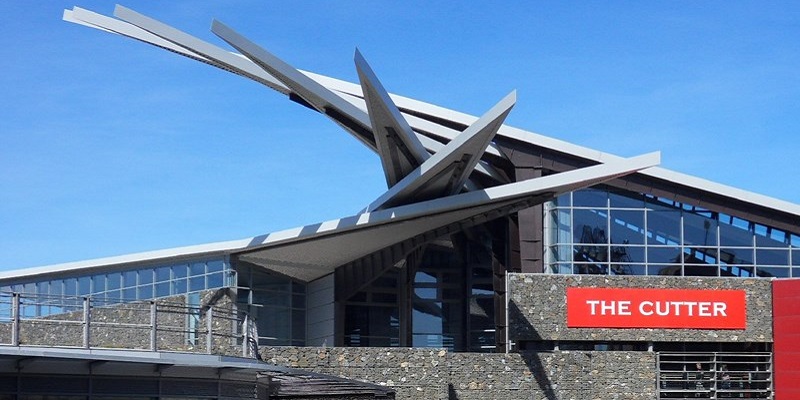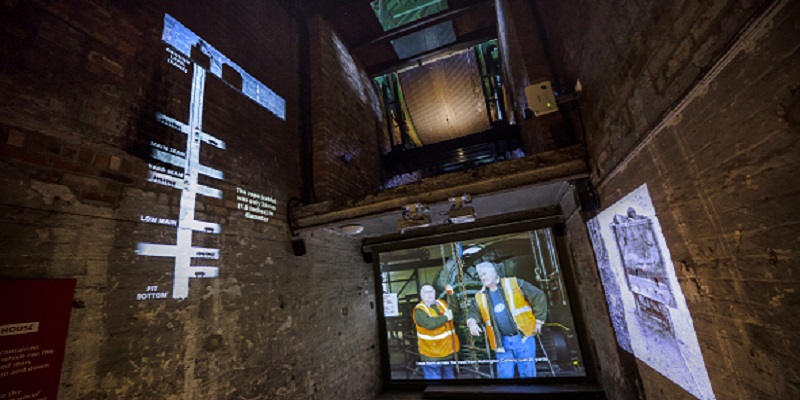Winding down with great disabled access

This year, Euan’s Guide listed venue Woodhorn Museum in Northumberland launched a fascinating new interpretation experience which threads in disabled access from start to finish. The iconic winding engine of this historic colliery now emerges at ground level and its story is being told to visitors through new animated sequences and entertaining oral histories.
Before this dramatic renovation, the nature of the building meant that it could only offer very limited access to guests. Now, with support from the Biffa Award through the Association of Independent Museums, Woodhorn Museum visitors can benefit from a greater understanding of the role and importance of the Winding House.
At Woodhorn, disabled guests and people with limited mobility prompted the venue to use Euan’s Guide to share their access information with others. This awareness is very apparent in the new experience, and we spoke to Deborah Tate to find out more about this spectacular transformation, and what this now means for disabled access at the Northumberland attraction:
Before receiving funding through the Biffa Award and renovating your museum, what kinds of accessibility challenges did you face?
Woodhorn Museum incorporates the original listed colliery buildings in its experience, and although some of the buildings had the benefit of having access ramps installed, others hadn’t. The Winding House was only accessible to visitors at limited times when staff were available to ensure public safety to the second floor engine room. Access was via two flights of narrow, open metalwork stairs; so inability to experience this space and feature of the museum severely restricted appreciation of the building and the understanding of its role within the working colliery.
The Winding House is central to the operation of a working colliery; both men and coal were transported from the surface via the 888 ft deep shaft, and the engine in this Winding House controlled the cables drawing the cages up and down the shaft. Although our visitors could enter the controlled Heapsead to see a man-rising cage, there was little link to the huge winding engine and the building which contained it.
What kinds of things did you do to try to overcome the physical limitations of your building?
The museum is quite spread out over the former colliery site, so we try to make a visit as easy as possible with Blue Badge parking available in two locations; one in the main car park and the other right next to the upper level of the main building. We have an electric scooter and two wheelchairs available to borrow, and these can be reserved in advance or picked up on the day subject to availability.
Our modern Cutter Building containing our social history displays, famous Pitmen Painters’ art collection and temporary exhibition is fully accessible with toilet facilities available on both upper and lower levels. Toilets are also available in three other locations around the site. Several buildings already have level access, but accessible ramps have been installed where possible in some of our listed buildings, including the Jack Engine (the last surviving steam winding engine in the North East), and the Capell Fan House, where visitors can find out about Woodhorn’s 1916 mining disaster.

Can you describe some of the interesting disabled access features that have come with the new interpretation experience?
The beauty of the new facilities in the Winding House at Woodhorn is their sheer simplicity. Existing double doors now open up to a space revealing the huge winding engine two floors above. Obstacles have been removed and a glass panel inserted along with lighting so that visitors can see the scale of the massive drum. In addition, projections on three of the walls illustrate the role of the building, engine and the workers in the colliery.

The first of these three projections is an animation showing how the cages travelled up and down the shaft, and provides the viewer with basic facts on speed, depth and more. The second is used for a subtitled film featuring two former windermen. In it, they explain in their own unique way about the important work they did and the bell system used to communicate with the cage operator below ground. They also talk about their personal experiences and there is the chance to see footage of the huge drum and mechanism in operation. The final projection uses a mixture of photographs, old film and oral subtitled history recordings which add even more personal experiences.

What kind of response have you had from the new interpretation so far?
The response to the new facilities has been welcomed by everyone. They have enjoyed discovering a new space with a fascinating story. Whilst we were particularly keen to enable those with mobility issues to have access to the building and understand its role for the very first time, the opening has meant that everyone has equal and safe access. It is good to now know that no one should feel excluded.
Who was in charge of coming up with the new design? Was it fun to plan?
Woodhorn’s Acting Director, Jo Raw, was responsible for the developments. Jo worked with the designer (LamasTech) and architect to ensure the plans combined the necessary practical considerations for access, lighting and more; along with a good level of factual information and personal interest to keep the visitor engaged at all levels.
What are the most common kinds of disabled access questions you receive prior to a visitor’s arrival?
Dedicated parking is always a concern for visitors, and then the availability of toilet facilities.
What would be your main piece of advice for museums looking to take their accessibility to the next level?
We’ve recently had an audit of our facilities, and the results are just starting to come through now which will hopefully help us to improve our offering. We would suggest that if possible, obtaining advice from someone with knowledge and experience is always useful. Talking to other attractions that do it well is always an option too.
Find out more about Woodhorn Museum’s disabled access on their Euan’s Guide listing. Be sure to leave a review if you’ve already visited the newly renovated Winding House! Write a review >>


 Follow Euan's Guide on Instagram
Follow Euan's Guide on Instagram
 Follow Euan's Guide on LinkedIn
Follow Euan's Guide on LinkedIn
 Follow Euan's Guide on Facebook
Follow Euan's Guide on Facebook


Comments
You have to be signed in to leave a comment.
Login / Signup